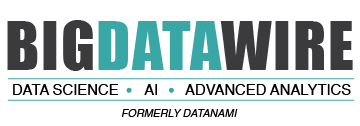People to Watch 2025 – Krishna Subramanian
First, congratulations on your selection as a 2025 BigDATAwire Person to Watch! You and your Komprise co-founders detected a problem with unstructured data management at previous startups. Did you ever think Komprise would grow into such a successful company?
We created Komprise because of our customers from our prior two companies. They told us that the growth of unstructured data took them by surprise, and they did not have any good way to solve the problem. So, we are gratified that our customers pointed us to a problem that is getting more and more urgent every single day. When we started Komprise, the main focus was unstructured data costs and the hybrid cloud. But now the need is even bigger with AI, yet our mission has remained the same: change the way the world manages unstructured data.
Why is unstructured data so difficult to manage?
Firstly, it is very large–our enterprise customers are collecting, generating and storing multiple petabytes of data. In healthcare for instance, it is not uncommon for provider organizations to have 50 PB of data and more. Secondly, it is diverse and multi-modal – constituting many different sizes and file types from documents to chat and text to audio, video and images to specialized industry applications such as scientific instruments and environmental sensors that produce unique data types. Large and small files both have their own challenges to efficiently move and manage. Unstructured data is spread across storage silos–Impeding visibility and data movement. It lacks context and a unified schema unlike structured data in databases. So that means it is difficult to search, leverage and understand this data adequately to make the right decisions on where to place it for cost savings and performance and security needs. This lack of context and structure is also a barrier to AI, which requires feeding the right unstructured data to AI pipelines.
On the whole, do you think GenAI will improve the manageability of unstructured data or hinder it?
Generative AI can help employees glean insights from and organize their data. Many employees are feeding their own documents into GenAI to develop new content and rapidly uncover nuggets of insight. Yet AI has presented a host of new challenges and requirements for the IT leaders managing corporate data. AI is most powerful to companies when they can feed their own organization’s data to it to develop targeted research, products and insights for better decisions and customer strategies. Yet ingesting sensitive data (proprietary and personal data) to AI is not acceptable when using a commercial/general AI platform because now you have exposed your sensitive data to the Internet. AI data governance is a complex challenge for organizations today: leaders need guardrails to prevent sensitive data leakage to these tools, auditing and monitoring of AI data workflows and also employee educational programs on how to safely use AI. They need to deliver these capabilities without impeding the competitive advantages of incorporating AI into the workplace. An emerging trend is GenAI or chatbot-like interfaces to unstructured data management systems to help automate tasks and/or deliver intelligence on the corporate data environment. This is still a very early stage and experimental strategy.
What can you tell us about yourself outside of the professional sphere – unique hobbies, favorite places, etc.? Is there anything about you that your colleagues might be surprised to learn?
I enjoy hiking, reading, and traveling across the globe. One thing my professional acquaintances may not know about me is that I am a trained Classical Indian dancer, and I perform a dance-style called Kuchipudi. This is an ancient Indian dance form that until a century ago was only performed by male dancers. I love it because it connects me to my culture and it is a stress reliever!














